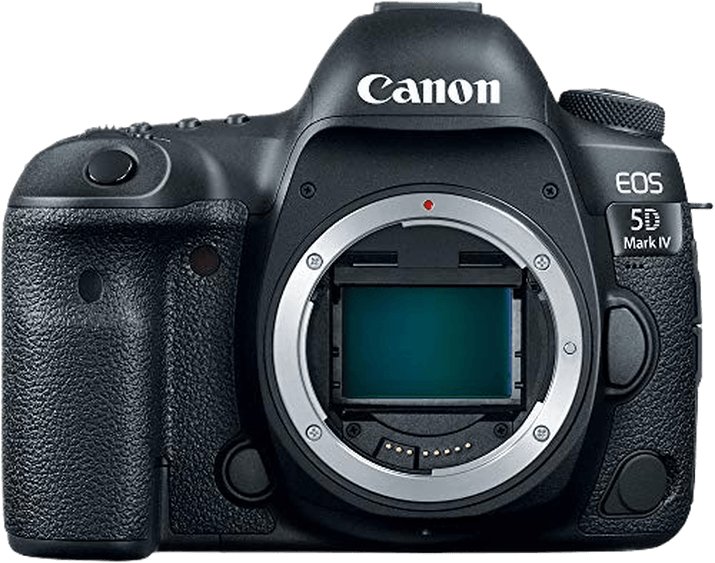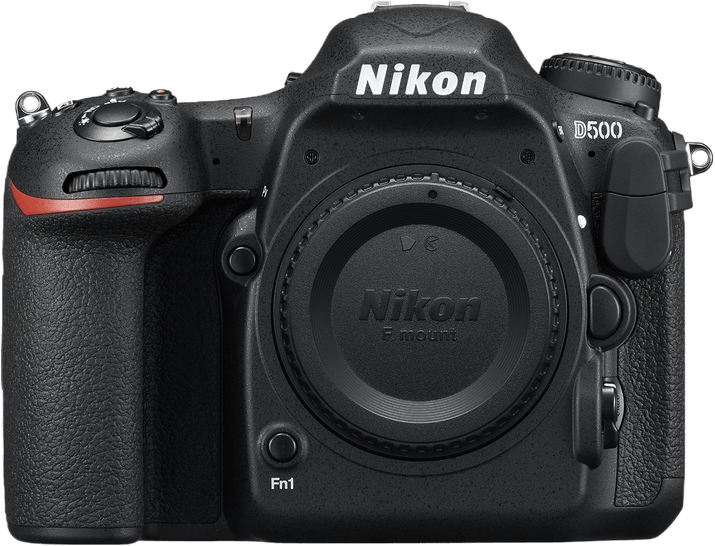Canon EOS 5D Mark IV vs Nikon D500 Comparison
Canon EOS 5D Mark IV

Nikon D500

The Canon EOS 5D Mark IV and Nikon D500 both scored 75/100 in our evaluation, making them equal in terms of overall quality. As DSLR cameras, they share some common specifications, including their release year of 2016. The Canon EOS 5D Mark IV has a slightly larger frame, measuring 151 x 116 x 76mm, while the Nikon D500 is a bit smaller at 147 x 115 x 81mm. The Canon camera is also a bit heavier, weighing 1.96lbs compared to Nikon’s 1.90lbs.
The Canon EOS 5D Mark IV stands out with its higher launch price of $3500, suggesting that it offers more advanced features and better performance. On the other hand, the Nikon D500 is more affordable, with a launch price of $2000, making it a more budget-friendly option for those looking for a high-quality camera.
Both cameras have their own strengths, with the Canon EOS 5D Mark IV offering a more premium experience, while the Nikon D500 provides a more budget-friendly option without compromising on quality.
Canon EOS 5D Mark IV vs Nikon D500 Overview and Optics
The Canon EOS 5D Mark IV outperforms the Nikon D500 in optics with a score of 76/100 compared to the Nikon’s 69/100. Both cameras share similarities, including a CMOS sensor, no image stabilization, and a fast processor (Canon’s Digic 6+ and Nikon’s Expeed 5). However, there are notable differences that contribute to the Canon’s higher score.
The Canon 5D Mark IV has a 30.4-megapixel sensor, providing higher resolution and detail in images compared to the Nikon D500’s 20.9-megapixel sensor. Additionally, the Canon boasts a full-frame sensor, which offers better low-light performance and a shallower depth of field than the Nikon’s APS-C sensor. The Canon also has a higher DXOMARK score for its sensor (91) than the Nikon (84), reflecting better overall image quality.
Despite the lower score, the Nikon D500 does have an advantage in shooting speed, with a rate of 10 frames per second compared to the Canon’s 7. This makes the Nikon more suitable for capturing fast-moving subjects or action photography.
Both cameras have different lens mounts, with the Canon using the EF mount and the Nikon using the F DX mount. This means that each camera is compatible with a wide range of lenses from their respective manufacturers.
To conclude, the Canon EOS 5D Mark IV offers superior optics in terms of image quality, resolution, and low-light performance. However, the Nikon D500 excels in shooting speed and is more suited for action photography. Ultimately, the choice between these two cameras depends on the specific needs and priorities of the photographer.
Canon EOS 5D Mark IV vs Nikon D500 Video Performance
The Canon EOS 5D Mark IV outperforms the Nikon D500 in video capabilities with a score of 91/100 compared to the Nikon’s 70/100. Both cameras share common features such as 4K video resolution and built-in time-lapse functionality. However, the Canon EOS 5D Mark IV excels in several aspects which contribute to its higher score.
The Canon EOS 5D Mark IV has a maximum video frame rate of 120fps, which is significantly higher than the Nikon D500’s 30fps. This allows for smoother and more detailed slow-motion footage, providing an advantage for videographers capturing fast-paced action or events. Additionally, the Canon camera offers a higher maximum video dimension of 4096 x 2160 compared to the Nikon’s 3840 x 2160. This results in sharper and more detailed videos, giving the Canon EOS 5D Mark IV an edge in overall video quality.
On the other hand, the Nikon D500 does not have any notable advantages over the Canon EOS 5D Mark IV in terms of video capabilities. Both cameras offer 4K video resolution and built-in time-lapse functionality, but the Canon surpasses the Nikon in video frame rate and dimensions.
Based on these factors, the Canon EOS 5D Mark IV is the clear winner when it comes to video capabilities. Its higher video frame rate and dimensions provide better quality and versatility for videographers, while the Nikon D500 does not offer any additional benefits. Despite sharing some common features, the Canon EOS 5D Mark IV’s superior performance makes it the better choice for those prioritizing video capabilities in their camera selection.
Canon EOS 5D Mark IV vs Nikon D500 Features and Benefits
The Nikon D500 emerges as the winner in features, with a score of 87/100, compared to the Canon EOS 5D Mark IV’s score of 74/100. Both cameras share some common specifications, such as a 3.2-inch screen, touchscreen capabilities, and WIFI connectivity.
The Nikon D500 surpasses the Canon EOS 5D Mark IV with a higher screen resolution of 2,359,000 dots, compared to 1,620,000 dots. This results in a crisper and more detailed display, enhancing the user’s experience. Additionally, the Nikon D500 features a flip screen, allowing for more versatile shooting angles and easier self-portraits. Another advantage is its Bluetooth connectivity, providing seamless file transfer and remote control options.
On the other hand, the Canon EOS 5D Mark IV has an edge with its built-in GPS feature, enabling automatic geotagging of photos. This can be useful for photographers who travel and want to keep track of locations where their photos were taken. However, this advantage may not be significant enough to outweigh the benefits of the Nikon D500’s superior features.
Taking these factors into account, it is evident that the Nikon D500 offers more advanced features, making it the better choice for photographers who prioritize versatility and connectivity. Meanwhile, the Canon EOS 5D Mark IV may appeal to those who find the GPS functionality essential for their photography needs. Ultimately, the choice between these two cameras depends on individual preferences and requirements.
Canon EOS 5D Mark IV vs Nikon D500 Storage and Battery
The Nikon D500 outperforms the Canon EOS 5D Mark IV in storage and battery, scoring 79/100 compared to Canon’s 71/100. Both cameras have two memory card slots, but the Nikon D500 accepts UHS-II SD cards and XQD cards, while the Canon 5D Mark IV is only compatible with UHS-I SD cards and Compact Flash cards. This gives the Nikon D500 an advantage in storage capacity and speed.
In terms of battery life, the Nikon D500 is also superior, offering 1240 shots per charge with its EN-EL15 battery, compared to the Canon 5D Mark IV’s 900 shots with the LP-E6N battery. Neither camera offers USB charging.
While the Canon 5D Mark IV falls short in storage and battery life, it still provides users with ample memory card options and a decent battery life for most shooting situations. However, the Nikon D500 offers better storage capabilities and longer battery life, making it the preferable choice for photographers who prioritize these aspects.
Canon EOS 5D Mark IV vs Nikon D500 – Our Verdict
Are you still undecided about which camera is right for you? Have a look at these popular comparisons that feature the Canon EOS 5D Mark IV or the Nikon D500:

